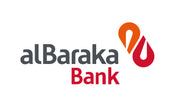What is the Conduct Standard?
The Conduct Standard flows from the mandate of the Regulators to regulate and supervise the conduct of banks in relation to providing financial products and services. In order to give effect to this mandate, the FSCA developed the Conduct Standard for Banks, which sets out the minimum requirements for banks to comply with in relation to the treatment of customers.
So what does this mean for banks and more importantly what does this mean for the banks’ financial customers?
This means that banks are now formally required to enforce the principles of Treating Customers Fairly which relates to the way a bank would interact with customers on a daily basis. This Standard regulates the bank’s method of conducting transactions, the bank’s products, services and so forth, with the main focus being to ensure that all the banks’ clients are treated fairly.
What does it mean to Treat Customers Fairly?
Fair treatment is built on principles that require banks to achieve six defined outcomes, namely:
- Outcome 1: Culture and Governance – Section 3 of the Conduct Standard provides an obligation on banks to document, adopt, implement and monitor the effectiveness of appropriate governance arrangements that are necessary to ensure that the bank conducts its business in a manner which prioritises the fair treatment of its customers.
- Outcome 2: Product Suitability - Section 4 of the Conduct Standard addresses the design, suitability and performance requirements with which financial products and financial services must comply with. Banks are required to establish and implement appropriate oversight arrangements to monitor and review the design and suitability of its financial products and financial services on an ongoing basis to ensure that it meets the requirements and expectations of customers.
- Outcome 3: Disclosure - Section 6 of the Conduct Standard sets minimum standards for advertising and the governance processes that must be in place for the approval of advertisements. This means that banks must ensure that their financial products and financial services are advertised in a manner that is clear, fair and not misleading.
- Outcome 4: Suitable Advice - Section 7 of the Conduct Standard identifies the factors that need to be taken into account when making disclosures to financial customers. These include the nature and complexity of the financial product to ensure that a financial customer is given appropriate information about a financial product or financial service. This will help the customer in the decision-making process to ensure that they consider all factors before entering into, using, or maintaining the product or service.
- Outcome 5: Performance and Service - Section 4 of the Conduct Standard, provides that a bank must continually monitor and review the design and suitability of financial products and financial services on an ongoing basis. A bank must also ensure that timeous remedial action is taken in respect of financial products and/or financial services which may result in an unfair outcome for customers. The product should perform as the customer has been led to expect by the bank and customer service should be of an acceptable standard and in line with such expectation which has been created by the bank. This section clearly states that unfair product terms and conditions, including unfair charges, are prohibited.
- Outcome 6: Claims, Complaints and Changes - Section 8 of the Conduct Standard enables effective complaints management within the bank, including appropriate training of responsible staff, the categorisation of complaints and other procedures that need to be in place. Customer complaints need to be taken seriously, addressed appropriately and the bank needs to ensure that they are resolved timeously. Sections 9 and 10 of the Conduct Standard deals with account closure and switching, both when initiated by the bank as well as by the financial customer themselves.
Banks have often been in the spotlight with regard to the treatment of their clients which has raised a lot of concern over the years. In addition, the financial services industry has always been criticised for not having sufficient processes in place to ensure the protection of customers. This Conduct Standard for Banks will therefore give effect to better and more improved supervision of the treatment of financial clients, with an emphasis on transparency and disclosure by banks when offering financial products and financial services to clients.
Here at Al Baraka Bank, we believe that the Conduct Standard for Banks re-enforces what the bank strives to achieve each day with every client, which is to meet the financial needs of customers across the country whilst conducting business ethically, in accordance with our values and beliefs, practicing the highest professional standards and keeping the customer and it’s needs at the centre of our business at all times.



